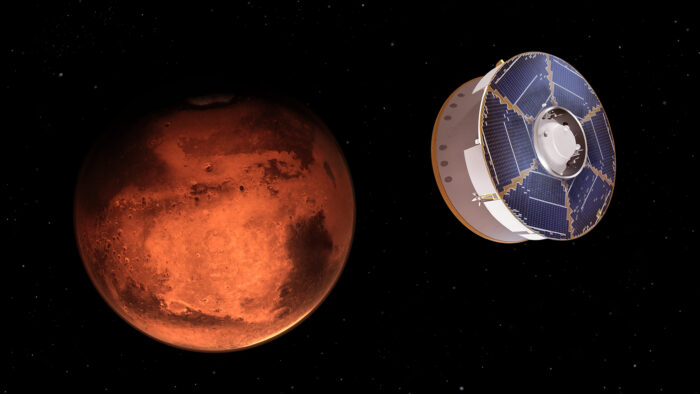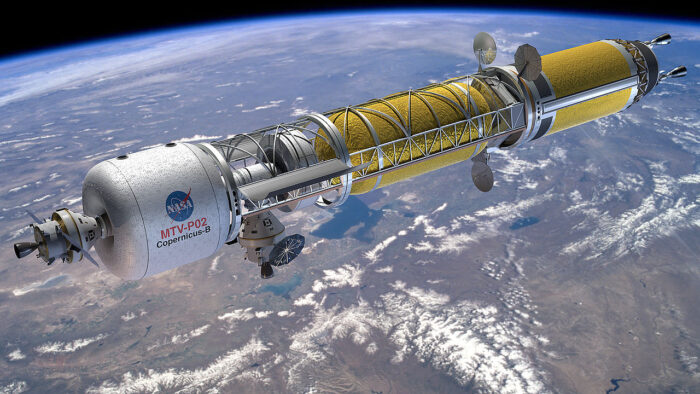Space travel involves a lot of complicated factors.
Being able to escape our planet's gravity is one of them (that's why our spacecraft need such massive rockets at launch time). Making sure that a craft has everything that its crew needs to survive is another. There's no stopping off at a gas station mid-journey to grab a couple things that you forgot to pack before you left home!
But perhaps the biggest issue? The distance.
Everything in space is just so mindbogglingly far apart. Take traveling to Mars, one of our closest planetary neighbours. These days, we send probes to Mars relatively often. But those trips take an average of about seven months. That's a 210-day journey, over half a year.
That's fine for a robot rover like Perseverance. But for a human? Is there any way that we can trim that time down a little?
Well, according to scientists and engineers at NASA, the answer is yes! They have unveiled a new plan to build a nuclear-powered rocket that would be able to get to Mars in just 45 days. Sure, that's still a month and a half stuck in a floating tin can hurtling through a vacuum, but it's a huge improvement over the old way!
Double the power

Art of Perseverance approaching Mars. The journey to this planet is a long one. (NASA)
The secret to this new rocket would be a special bimodal (or two mode) engine. It combines two methods of nuclear propulsion: nuclear-thermal propulsion (NTP) and nuclear-electric propulsion (NEP).
So why is an NTP/NEP engine so much better? Here is the basic breakdown of why NASA believes that this idea is a good one.
Both of these types of nuclear engines have advantages over the standard chemical engine (one that uses rocket fuel). But they each have their flaws, too. These issues have prevented nuclear engines from being adopted more universally in the space program.
But what if they were combined? NTP is very powerful. NEP is very long-lasting. Put together, engineers hope to construct an engine that is not only over twice as powerful as standard rockets, but one that can provide that kind of power for a long period of time.
Like across an interplanetary journey!
Are we there yet?
Of course, this bimodal rocket is still in the proposal stages. It is part of the new projects for 2023 at the NASA's Innovative Advanced Concepts (NIAC) branch. But if it is successful, it will do more than make the journey to Mars less boring.
It will make it much safer.
Currently, the estimated time for an entire Mars mission is around three years. That means getting there, landing and conducting the mission, and flying home. And it is further complicated by the fact that we ideally need to wait for Mars and Earth to be close enough to each other to make the trip easier (remember that unlike two cities on Earth, planets are always on the move).
Considering that a human has rarely spent much more than six months at a time in microgravity (on the ISS), we don't know how well humans will be able to survive being away from Earth for that long. In a lot of ways, our planet's gravity holds us together. It's what we're used to!
But if the journey to and from Mars can be trimmed to about six weeks, suddenly the entire mission could be done in months, not years. It would still likely add up to the longest continuous time humans have spent in space. But it would be a lot shorter.
That's an advantage worth looking to!
 An artist's concept of the newly proposed bimodal nuclear rocket. (NASA)
An artist's concept of the newly proposed bimodal nuclear rocket. (NASA)









